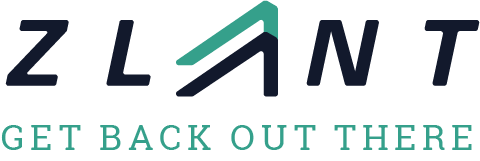Mastering De Quervain's Tenosynovitis Recovery

Imagine this scenario: you're enthusiastically typing away or enjoying a hobby when a sudden sharp twinge in your wrist interrupts your flow. De Quervain's Tenosynovitis is more prevalent than you might realize, affecting both avid writers and enthusiasts of various activities. In this comprehensive guide, we'll dive into the world of De Quervain's, shedding light on its origins, symptoms, and revealing practical strategies to facilitate your journey towards recovery. With Zlaant's expertise by your side, you'll soon be back to relishing life's moments with a pain-free wrist.
Understanding De Quervain's Tenosynovitis:
De Quervain's Tenosynovitis comes about when the tendons at the base of your thumb, nestled within your wrist's delicate arrangement of soft tissues, experience inflammation due to repeated movement or overuse. These tendons play a pivotal role in enabling wrist and thumb movement during various tasks, such as writing or grasping objects. However, actions involving repetitive hand and wrist motions can cause these tendons to rub against their sheath excessively, leading to irritation and inflammation.
Spotting the Signs:
The telltale sign of De Quervain's Tenosynovitis is tenderness and pain around the thumb and wrist's base, accompanied by noticeable swelling. The pain often intensifies when engaging in activities that involve gripping or turning motions, such as when opening bottle open, you may also observe difficulty performing any task that necessitates thumb movement. An interesting aspect of this condition is that the pain patterns can shift – typically it will heighten during active moments and then subside into a dull ache during periods of rest. However any variation in this pattern can provide valuable insight into the nature of your De Quervain's Tenosynovitis and can assist in its effective management. Identifying these indicators is vital for early intervention and preventing further complications.
Factors that Can Increase Susceptibility:
Multiple factors contribute to De Quervain's, including:
- Repetitive Movements and Overuse: Engaging in repetitive gripping or turning motions can overburden the tendons. This is not exclusive to sport activities, actions like typing or using a mouse extensively can also lead to inflammation.
- Poor Hand Positioning: Awkward wrist and thumb positioning during activities can strain tendons. This can range from how you grip your racket, to the position of your hand at your desk.
- Weak Thumb Muscles: Insufficient strength in the thumb muscles can exacerbate the condition.
- Inadequate Ergonomics: Poor workspace setup can strain the wrist and thumb during prolonged tasks.
Preventing De Quervain's Tenosynovitis:
Protecting your wrist and thumb from De Quervain's involves a proactive approach:
- Ergonomics and Hand Positioning: Maintain proper hand and wrist alignment while working to minimize strain. Adjust your workstation setup to keep wrists and thumbs in neutral positions.
- Rest and Stretching: Prioritize breaks and stretches during repetitive tasks. Gentle stretching of thumb and wrist muscles can promote flexibility and reduce tension.
- Correct Technique: Learn and apply proper hand movements during physical activities to avoid excessive strain on tendons.
- Gradual Increase: If adopting new activities involving thumb use, ease into them to allow tendons to adapt gradually.
- Supportive Devices: Wearing thumb spica braces during activities that strain the tendons can provide added support and reduce stress.
Navigating De Quervain's Recovery:
Reclaiming wrist and thumb health demands personalized efforts:
- Rest and Immobilization: Allow the affected hand to rest and heal. Immobilize it with a thumb spica splint or brace recommended by a healthcare professional.
- Ice and Elevation: Applying ice and elevating the hand can alleviate swelling and discomfort.
- Controlled Movements: After the acute phase, engage in controlled thumb and wrist movements to regain flexibility and prevent stiffness.
- Gradual Strength Building: As healing progresses, incorporate gradual strengthening exercises for the thumb and wrist muscles.
- Professional Guidance: Consult a healthcare provider or hand therapist for a tailored rehabilitation plan. They can guide you through proper exercises and monitor your progress.
As we navigate the challenges posed by De Quervain's Tenosynovitis, let's remember that our bodies possess incredible resilience. Just as this condition disrupts our daily rhythm, it also highlights our potential for healing and growth. By embracing proactive prevention, seeking timely care, and embodying Zlaants ethos of patience, consistency, and quality movement, you empower yourself to emerge stronger.
Our hands are incredibly functional tools that empower us to live our busy and active lifestyles, let’s remember to support them. Strengthen and stretch your thumb and wrist, give them the rest they need, and be mindful the ergonomics of your daily life. Soon you'll rediscover the joy of a pain-free lifestyle.
Helping you get back out there - Zlaant
Note: This blog post is for informational purposes only and does not replace medical advice. If you're experiencing persistent or severe pain, consult with a qualified healthcare professional.
